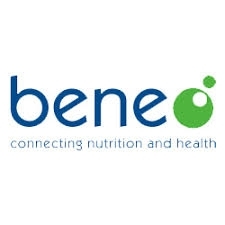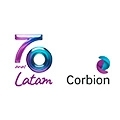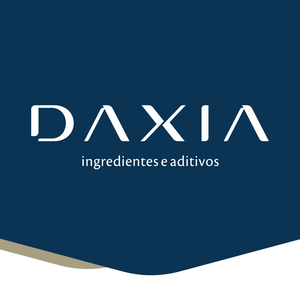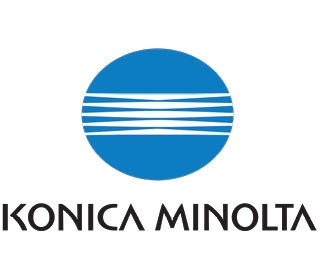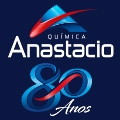Winter sports (Part 2): Whey proteins and wellness play crucial role in active lifestyles
For a long time, the sports nutrition category was a niche sector, catering mainly for bodybuilders and elite athletes – the “core users" of sports nutrition products. These individuals, who still exist today, are typically high-volume users, frequent purchasers and are knowledgeable, discerning consumers. Winter sports, in general, have much to do with increased consumption of protein as a whole and whey proteins and health and wellness play an active role in this concept.
Arla Foods Ingredients
According to Jordan Donohue, Business Development Manager for Sports Nutrition & Health Foods at Arla Foods Ingredients, people in general, are putting greater focus on managing weight and increasing fitness levels.
“The world of sports nutrition has become more appealing to greater numbers of mainstream consumers, or what we might call ‘casual users’. We are talking here about mass channel shoppers who tend to prefer convenient product formats and to look out for familiar ingredients they trust, with a leaning towards clean labels and formulations free from certain ingredient.
Meanwhile, another group has now emerged, which is made up of people who see their performance in a different way. They are committed sports and fitness, but they are not athletes. “They are highly dedicated people who see fitness as the key to their high-performance lifestyle,” says Donohue. “In the sports nutrition market, we call these types of people ‘fitness lifestyle users.’ They are usually health and wellness evangelists. They are brand-conscious, but they are also happy to try out new products, formats and ingredients.”
The growth of sports nutrition and the widening of its consumer appeal have turned out to be positive developments for dairy proteins – and particularly whey proteins. The success of whey is mainly due to an increasing awareness that, in nutritional terms, it is among the best quality sources of protein around,” claims Donohue. “Furthermore, it delivers a taste with a greater level of acceptance among consumers than that offered by other protein sources. Additionally, whey is versatile and easy to use in product applications, which means it is also popular among manufacturers.”
Athletes and fitness enthusiasts consume proteins so they can build lean muscle mass and recover more rapidly after exercising – all with the fundamental aim of maximizing their performance. Several options are available to them, but the taste and nutritional quality of these can vary greatly. On the whole, they view dairy proteins such as whey to be superior in terms of both flavor and the benefits they deliver.
Whey proteins are well known for the benefits they offer, they are rich in essential amino acids and branched-chain amino acids, in particular, leucine, meaning that whey stimulates muscle growth and regeneration more effectively than other protein sources do.
“As the sports nutrition category flourishes, we expect to see whey protein hydrolysates play a greater role in the evolution of the sector,” claims Donohue. “Hydrolysates are very high-quality proteins that have, essentially, been finely chopped – or ‘pre-digested’ – in order that they can be absorbed more rapidly by the body than with conventional proteins. As a result, they can get to work more quickly in helping muscles recover following exercise.”
“In sports nutrition circles, whey protein hydrolysates have long been recognized as the ultimate form of protein, because they accelerate recovery post-workout and help to build lean muscle fast. They’ve also been widely used in medical nutrition products. Due to processing challenges, however, their use in more mainstream applications, such as RTD beverages, has been limited – and this means a lot of active consumers have been missing out on their benefits. We’re talking here about the many people who take their exercise seriously, but don’t necessarily want to take protein in the form of a supplement or shake.”
Instead, they prefer to consume an RTD beverage after training sessions. For these people, whey protein hydrolysates have until now largely been out of reach, but that’s all changing.
Arla Foods Ingredients has developed a new range of Lacprodan whey protein hydrolysates that offer all the health benefits you’d expect but which are very easy to formulate into clear beverages, without any of the taste and stability problems previously associated with hydrolysates. This is quite unique, and a “major development for beverage manufacturers,” says Donohue.
Over the course of 2018 and beyond, Arla Foods Ingredients expects to see a significant increase in launches of whey protein ready-to-drink beverages, with a particular focus on clear protein waters, with the caveat that it has traditionally been difficult to incorporate whey into clear RTDs without compromising the taste, texture and appearance of the product. However, Arla Foods Ingredients has developed Lacprodan DI-9213, which addresses this challenge. It can be successfully incorporated into a crystal clear RTD that is 100 percent whey-based, contains up to 9 percent protein content, is sugar and fat-free, and offers an appealing taste.
Protein bars are another growth area, according to Donohue. “One of our most recent developments is a new whey protein solution that stays soft for at least a year, making it possible to crack the problem of hard protein bars. Nearly half of US consumers (45 percent) purchased a high-protein snack bar in the past month,” he claims.
However, due to textural deterioration during shelf life – a common issue with high-protein snack bars – it’s likely that many of the bars had lost their soft and chewy texture by the time they were eaten.
“To address this challenge our technologists have developed Nutrilac PB-8420, a whey protein that ensures protein bars retain an indulgent and chewy texture for 12 months or more in ambient storage conditions. Furthermore, the ingredient is all-natural and derived from cows’ milk – helping to keep the recipe simple and ensure consumer demand for clean and clear labels is met. To showcase the new protein solution, we created a 28 percent protein apple and coconut protein bar concept that is the perfect blueprint for sports nutrition applications,” he reveals.
EPI LaitaMathieu Lucot, Marketing Manager at EPI Ingredients, underlined that the demand for protein products is continuously growing and shows no signs of slowing down. “In the last few years, a whole new pool of consumers has indeed been turning towards protein-enriched sports nutrition products to fulfill their daily needs, not only for sports but also for wellness too.”
This change in consumer profiles, now extensively made up of active consumers focused on integrating health and fitness into day-to-day activities or seniors wanting to maintain an active lifestyle for as long as possible, has brought new challenges upon the industry: “Relatively new to sports nutrition products, these “everyday” consumers are not used to sacrificing on taste and are not ready to do so, regardless of the benefit provided; thereby compelling manufacturers to continuously innovate in order to launch new products that deliver on both taste and performance.”
“With consumers increasingly aware of the direct relationship between overall wellness and their diet, more and more are seeking good-tasting nutrient-dense foods going beyond basic nutrition, to support their active lifestyles. Dairy ingredients deliver on all levels, from tasting great and being healthy and natural,” he explains.
As a source of energy naturally packed with nutrients ranging from high-quality protein to micronutrients such as vitamins and minerals, dairy can also provide enhanced nutrition to meet the specific needs of different demographics, from infants and seniors to fitness-enthusiasts.
“As far as dairy proteins are concerned, whey has made a name for itself in sports nutrition. Part of its huge success is consumers awareness of its nutritional benefits. Indeed, a lot of athletes and fitness-enthusiasts consider the nutritional quality of protein as critical, which is an asset for all dairy proteins; the next step being to educate consumers about the specific benefits of each of them,” Lucot states.
Both drinking milk and dairy ingredients such as dairy powders, milk proteins and hydrolyzed proteins can safely contribute to fueling the day-to-day activities of people of all ages. In addition, native dairy ingredients – a result of a gentle transformation process that does not disturb the structure or functionalities of the desired component – perfectly align with consumers’ increasing demand for clean labels and natural products.
When it comes to active nutrition, another important aspect is the bioavailability of nutrients, according to Lucot. “Although studies are still being conducted to learn more, milk-based nutrients have proven to be highly bioavailable and therefore a great asset for active consumers,” he notes.
However, with more and more people embracing a vegan, vegetarian or flexitarian lifestyle, demand for non-animal proteins such as pea, soy, algae, mycelium or insect proteins is rising. “Besides obvious acceptance factors for sources like insects, the use of plant-based proteins comes with other significant hurdles,” he continues. “Indeed, most plant-based proteins sources lack one or more of the essential amino acids the body needs to function properly, therefore requiring a combination of different protein sources to be consumed for adequate nutrition. In addition to these nutritional challenges, taste is a major concern when using most of these proteins.”
“These challenges are foreign to dairy proteins, which are complete proteins with amino acid profiles and are also great tasting proteins and therefore easy to incorporate into a wide range of finished products.”
Lucot maintains that dairy-based protein ingredients will continue to grow in the sports nutrition category for the foreseeable future. With protein intake being crucial to sports and the active consumer, the industry as a whole can expect to see further innovation in this space.



